This is an article by Matt Williams, our solar encyclopedia and GM.
A lot of clients and friends that I speak to ask me why I chose Q CELLS for my home? With such a variety of brands it can get quite confusing to understand the differences between the many options on the market. When I started in this industry I did a lot of independent research to begin to understand how panels are made and tested to cut through the marketing and datasheets that seem to do more to confuse you than anything else.
I paid particular attention to Q CELLS testing out at the Desert Knowledge facility in Alice Springs. Q CELLS had a system set up here in 2013 using their original Q.PRO range. Their performance was (and is) consistently in the top 3 out of over 30 other manufacturers installed on site. During the same year, Q CELLS submitted their panels to James Cook University in Townsville to be subject to a 1 in 500 year cyclone event with wind speeds up to 240km/h. Q CELLS panels would have survived infamous storms Larry and Yasi. This original Q CELLS panel was German manufactured before the company was bought by Hanwha group and rebranded Hanwha Q CELLS.
So, let’s go back to 2017 when I had this system installed in Brisbane. Q CELLS at this point had three main product offerings. Q.PEAK panels made in South Korea in a 300-310W model, Q.PLUS panels made in Malaysia in a 280-285W model, and the Q.POWER panels made in China in a 270-275W model. All models offered the same 12 year product warranty at that stage with a reasonable difference in price. I settled on the Q.PLUS model as I was not overly pressed for space and looking at an East/West split of panels (installation below).
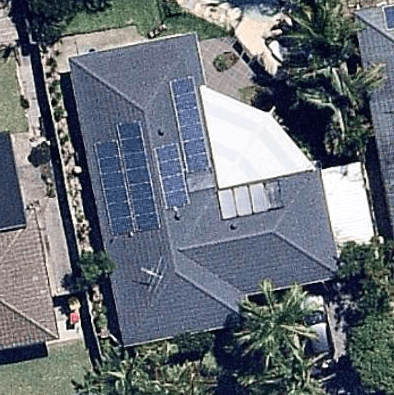
Q CELLS Q.PLUS model is a polycrystalline panel, another age old debate on whether you should choose poly or mono existed at this time (and before, and after). The most important factor at this point in my decision was the manufacturer themselves rather than the type of silicon used. From existing installations we had completed, we were able to monitor the performance of all Q CELLS models (as well as other panels we provide) to show real life data city to city.
Let’s look at the predicted and actual output of the system:
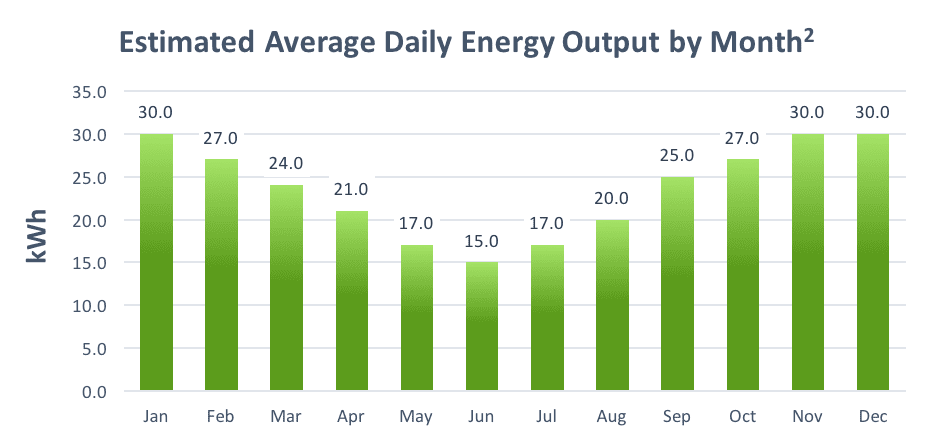

With each system we install we provide a system design summary (simplified version above). This considers the location, pitch of the roof and azimuth of the panels. As my home is East/West the expected annual output was 8580kWh (8.58MWh).
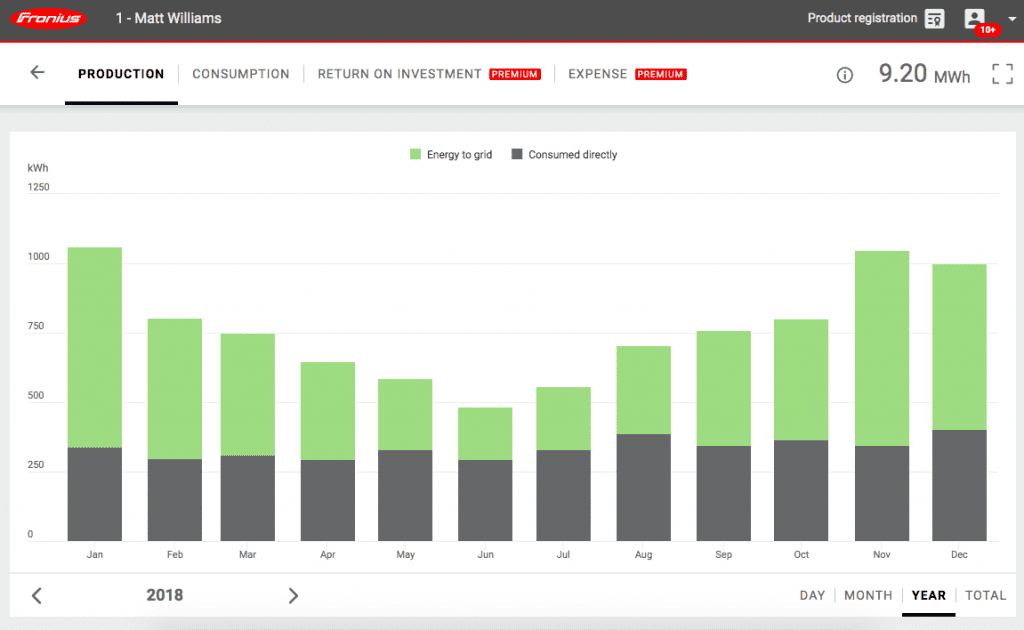 The chart above shows the total energy output in 2018 – 9200kWh (9.2MWh). This is 7.2% above the predicted output, or 620kWh.
The chart above shows the total energy output in 2018 – 9200kWh (9.2MWh). This is 7.2% above the predicted output, or 620kWh.
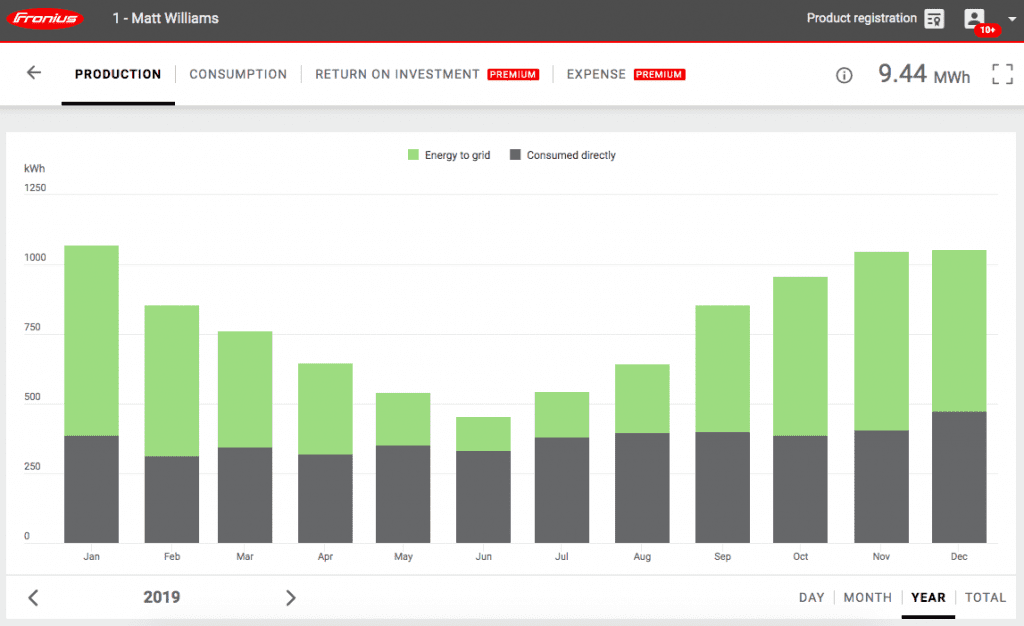 The chart above shows the total energy output in 2019 – 9440kWh (9.44MWh). This is 10.1% above the predicted output, or 860kWh.
The chart above shows the total energy output in 2019 – 9440kWh (9.44MWh). This is 10.1% above the predicted output, or 860kWh.
What about the savings?
With the Fronius consumption monitoring installed we can see exactly how much power has been consumed and returned to the grid and in turn the exact saving since installation in November 2017. This is displayed on the Fronius monitoring home page:
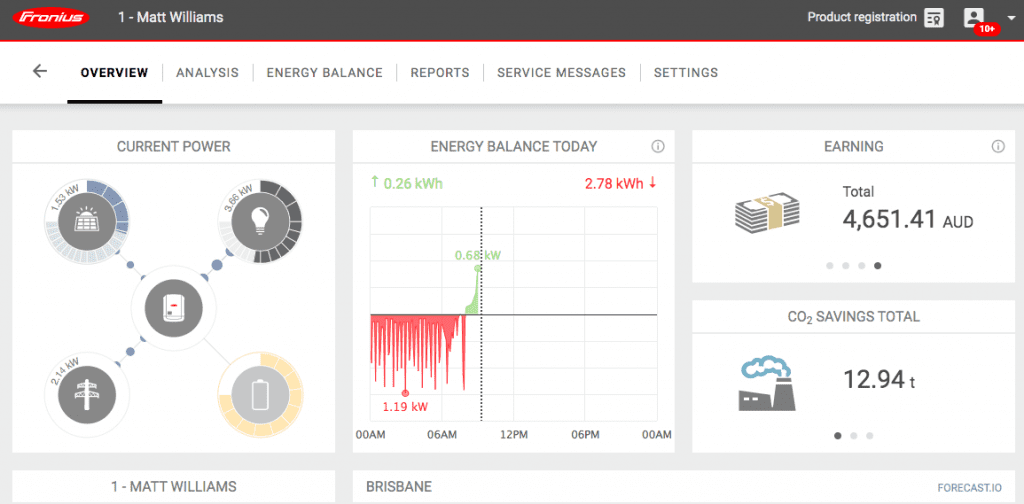
The higher output and excellent saving is not unusual from systems we have installed with Q CELLS panels. On average Q CELLS systems installed through 2015-2016 are continually performing 9-11% above predictions.
Q CELLS in 2020
So where are Q CELLS today? Q CELLS introduced a 25 year product warranty on their flagship Q.PEAK DUO G5+ and G6+ modules bringing them in line with their competitors at the top of the market. The Q.PEAK DUO is now the most popular panel we sell. Q CELLS manufacture these panels in South Korea through the most stringent of processes and resubmitted this updated module back to James Cook University for their cyclone testing again passing with excellent results.
Q CELLS combine mono PERC technology with split cells combining all important factors into their modules. The black frame is aesthetically pleasing ensuring their panels look the part as well as outperform expectations, especially with black racking.
Q CELLS also offer their Q.MAXX range. This model is made in China with a 12 year product warranty. Over the past few months this panel has proven very popular in the market. My hope is that this is being sold correctly and not as Q CELLS’ ‘flagship model’. It is no doubt a well made product but not in line with their DUO range. For the sake of a small additional investment you can have the peace of mind of one of if not the best panels in terms of a balance of price and quality with the backing of a Fortune 500 company providing a genuine 25 year product warranty.
Read our full Q CELLS review, covering their history and other features, here.
Like Matt, many of our customers buy Q CELLS with a Fronius inverter. See our Q CELLS/Fronius packages here.










